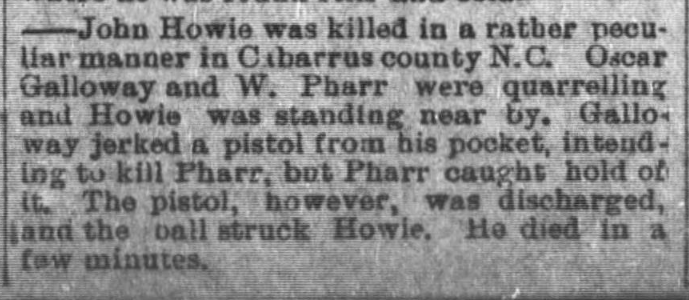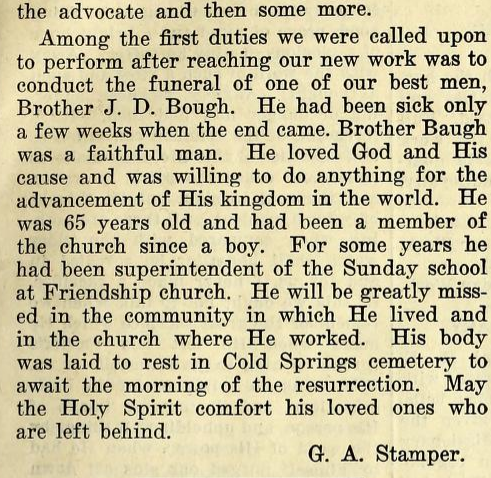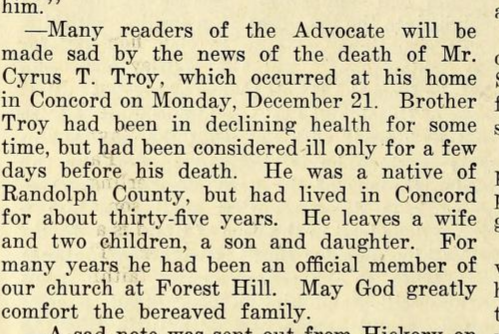Monday noon on the plantation known as the Chas. TAYLOR place in No. 2 Township, John HOWIE killed his brother Oz GALLOWAY by accident. We are informed that bad blood had for some time existed between John HOWIE and another negro by the name of White PHARR who lived on the same farm. At meal time White PHARR approached the house, when HOWIE seized a gun and threatened to shoot if he came in. PHARR seized the gun barrel turning it aside when it was discharged, the load entering GALLOWAY’s side. The victim of this feud lived about half an hour. At a magistrate’s trial the shooting was decided to be accidental, and the accused was discharged. This decision created quite a feeling among the people of the neighborhood and on Tuesday evening he was re-arrested, taken before Esq. Zeb MORRIS and committed to jail to await trial before the superior court. — Concord Times.
Source: Davidson Times-Dispatch, 5 February 1890. Paper available at Google News Archive.



